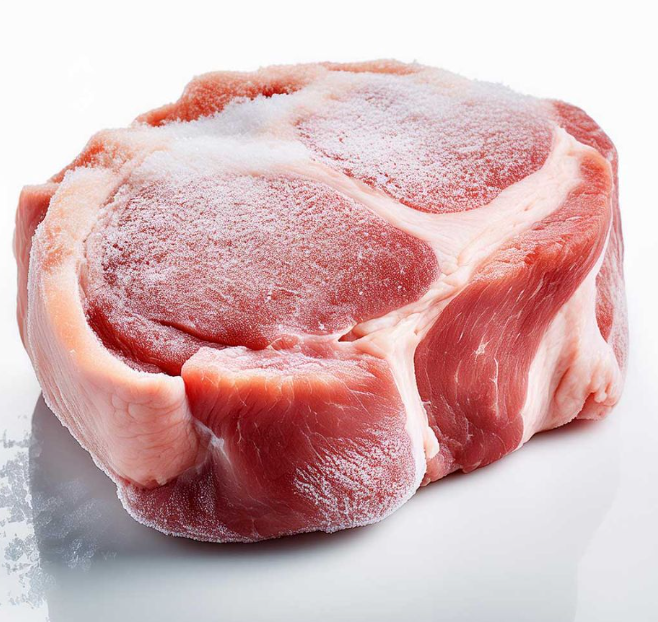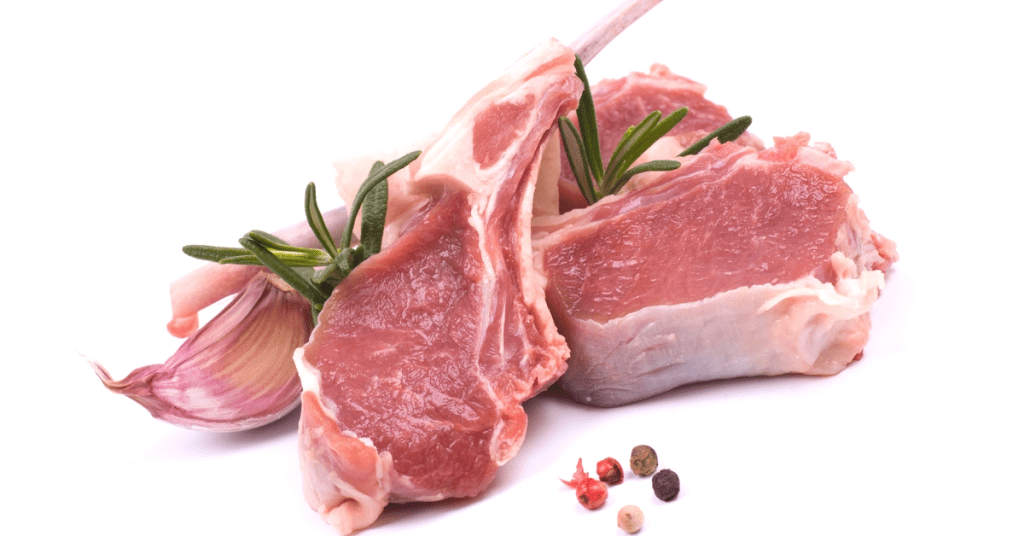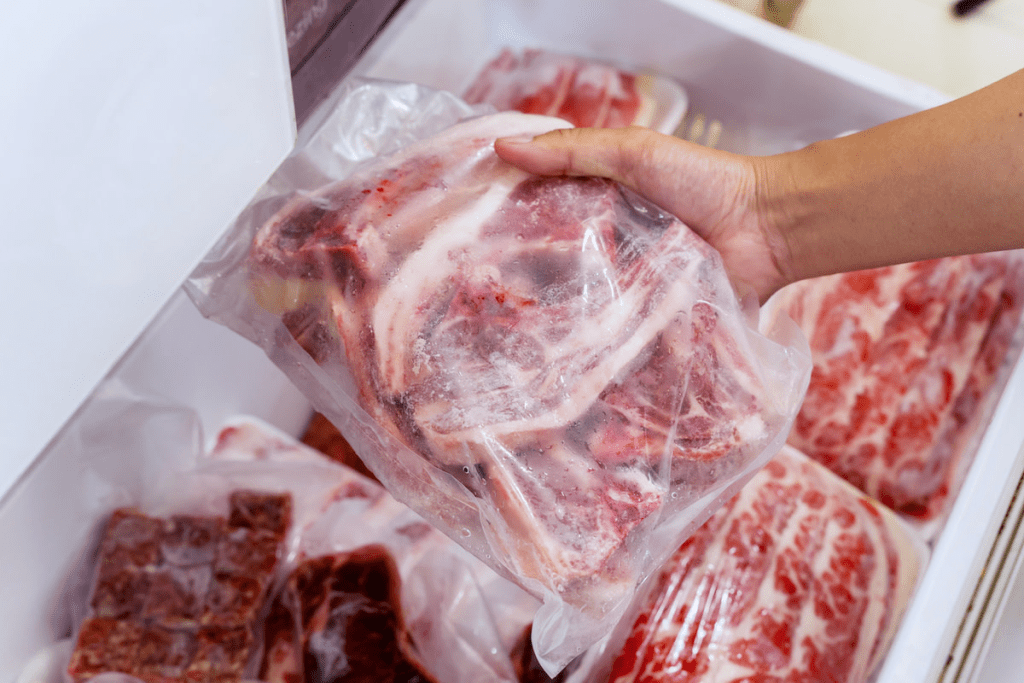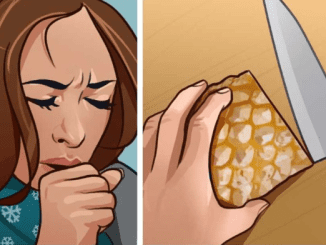Defrosting meat the right way is essential for both its quality and your safety. While hot water might seem like a quick fix, it’s actually one of the worst methods you can choose. Using hot water to thaw meat creates an ideal environment for bacteria to grow, which can lead to foodborne illnesses. Let’s dive into the specifics of why hot water is a bad choice for defrosting meat and explore six types of meat that should never be thawed this way.

The Dangers of Defrosting Meat in Hot Water
Hot water defrosting can cause meat to quickly enter what’s known as the “danger zone”—temperatures between 40°F and 140°F. In this zone, bacteria such as Salmonella and E. coli multiply rapidly. Beyond safety concerns, hot water also starts cooking the meat’s outer layers while leaving the inside frozen, leading to uneven textures and compromising flavor. Let’s look at which meats are particularly vulnerable to these risks.
1. Ground Beef: Why Hot Water Is a No-Go
Ground beef is prone to bacterial contamination because it has a large surface area exposed to air. If you defrost ground beef in hot water, the outer layers will warm up quickly, entering the danger zone where bacteria can thrive. To keep ground beef safe and maintain its texture, defrost it in the fridge, in cold water, or using the microwave’s defrost setting.
2. Poultry: The Risks with Chicken and Turkey
Poultry, including chicken and turkey, is especially risky to defrost in hot water. Poultry often carries harmful pathogens like Salmonella and Campylobacter, which can grow rapidly when the meat sits in warm water. In addition, hot water can cause the texture of poultry to turn rubbery, as it partially cooks the outside. To safely thaw poultry, use the refrigerator or a cold water bath, and change the water every 30 minutes to ensure it stays cold.
3. Pork: Why Bacon, Sausages, and Chops Should Stay Out of Hot Water
Hot water is particularly bad for defrosting pork products such as bacon, sausages, and chops. Pork contains a higher fat content, which begins to render in hot water, resulting in a greasy texture and uneven flavor. Pork is also vulnerable to bacterial growth when left in warm environments. For a safer thaw, store pork in the fridge overnight or use cold water and change it frequently to keep the temperature low.
4. Fish and Seafood: The Delicacy at Risk
Fish and seafood are delicate and require special care when thawing. Hot water will start cooking the outside of fish and seafood like shrimp or scallops while leaving the interior frozen. This not only results in uneven textures but can make seafood mushy and compromise its flavor. Instead, defrost fish and seafood in the refrigerator or use cold water for a faster yet safe method.
5. Lamb: Why It Needs a Gentler Thawing Approach
Lamb cuts, whether they’re chops, legs, or ground lamb, should not be defrosted in hot water. The marbled fat in lamb can begin to melt and cook when exposed to hot water, affecting the meat’s texture and leading to an uneven thaw. To maintain lamb’s rich flavor and tenderness, defrost it slowly in the fridge or in a cold water bath, which will keep it at a safer temperature.

6. Steak and Other Cuts of Beef: Avoiding the Hot Water Trap
Defrosting steaks and larger cuts of beef in hot water can cause the outside to cook while the inside remains frozen. This method not only risks bacterial growth but also makes the meat tough and chewy. To keep steaks tender, thaw them in the refrigerator or a cold water bath, changing the water regularly to ensure it stays cold. Using these methods will help retain the juiciness and flavor of the meat.
Safe Alternatives to Hot Water Defrosting
While hot water is a fast method, there are safer and more effective ways to defrost meat that preserve its quality and keep bacteria at bay:
Refrigeration: The Best Method
The refrigerator is the ideal place to defrost meat. It may take longer, but the fridge keeps the meat at a safe, consistent temperature. Smaller cuts can thaw within a few hours, while larger cuts may take 24 hours or more. This method minimizes the risk of bacterial growth and helps maintain the meat’s texture and flavor.

Cold Water Bath: A Faster Option
If you need to defrost meat more quickly, a cold water bath is an effective method. Place the meat in a leak-proof plastic bag, then submerge it in cold water, changing the water every 30 minutes. This keeps the water temperature low and prevents the meat from entering the danger zone. Most meats can defrost in a few hours with this method, making it a safer alternative to hot water.
Microwave Defrosting: Quick and Convenient
For last-minute defrosting, the microwave’s defrost setting can help. However, you should only use this method if you plan to cook the meat immediately afterward, as microwaving can cause some parts of the meat to begin cooking. Be sure to follow the microwave’s specific settings for defrosting meat to avoid uneven thawing.
Conclusion: Prioritize Food Safety and Quality
When it comes to defrosting meat, the method you choose matters. Using hot water can lead to bacterial growth, uneven textures, and even a loss of flavor. By following safe defrosting practices, like using the fridge, cold water baths, or the microwave when necessary, you can ensure your meat remains delicious and safe to eat. The extra time it takes to thaw meat properly is a small investment that pays off in flavor, texture, and peace of mind. Remember, it’s always worth the wait for safe and tasty meals!


